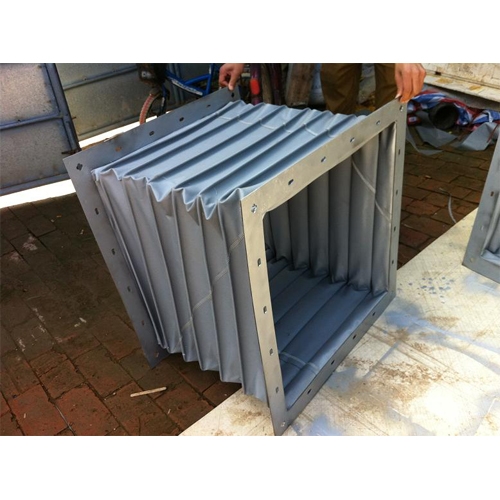The Importance of Corrosion Resistance in Ventilation Systems: A Comprehensive Guide
Ventilation systems play a crucial role in maintaining a safe and healthy environment in various industries, including chemical, pharmaceutical, and manufacturing. However, the equipment used in these systems is often exposed to corrosive environments, which can lead to premature failure, reduced efficiency, and even safety risks. In this blog post, we will delve into the world of corrosion resistance in ventilation systems, exploring the sources of corrosion, the importance of material selection, and the innovative solutions that can help extend the lifespan of equipment and ensure safe operation.
Understanding Corrosion Sources
Corrosion is a complex phenomenon that can occur due to various factors, including:
- Acid and alkaline gases: Industrial production processes often involve the release of acidic or alkaline gases, which can corrode equipment and infrastructure.
- Salt sprays: Coastal areas are prone to salt sprays, which can accelerate corrosion in metal components.
- High-temperature combustion gases: Boilers, incinerators, and other high-temperature equipment can produce corrosive gases that can damage ventilation systems.
Forms of Corrosion
Corrosion can manifest in different forms, depending on the environment and the materials used. Some common forms of corrosion include:
- Chemical corrosion: This type of corrosion occurs when a material reacts with a chemical substance, leading to the degradation of the material.
- Electrochemical corrosion: This form of corrosion occurs when an electric current flows through a material, causing it to degrade.
- High-temperature corrosion: This type of corrosion occurs when a material is exposed to high temperatures, leading to the degradation of the material.
Material Selection: The Key to Corrosion Resistance
The selection of materials is critical in determining the corrosion resistance of ventilation systems. Different materials have varying levels of resistance to corrosion, and the choice of material depends on the specific application and environment.
- Flexible rubber connections: These connections have some resistance to acidic and alkaline environments but can swell and age when exposed to strong corrosive environments for extended periods.
- Fluoroelastomer and silicone rubber: These materials have better corrosion resistance than flexible rubber connections and are suitable for use in chemical and pharmaceutical industries.
- Flexible metal connections: These connections can be coated with veneer or alloy materials to improve corrosion resistance and are suitable for use in complex environments such as industrial factories.
- Polymer materials: Materials such as PTFE have excellent tolerance to most chemical environments and are widely used in ventilation systems.
Innovative Solutions for Corrosion Resistance
In addition to material selection, there are several innovative solutions that can help improve corrosion resistance in ventilation systems. These include:
- Surface treatment: Surface treatment processes such as spraying anticorrosive coatings can further improve the protective capabilities of materials.
- Structural design: The overall design of the ventilation system can reduce contact between the medium and metallic parts, reducing the risk of corrosion.
- Regular maintenance: Regular inspection and maintenance of ventilation systems can help identify signs of corrosion and prevent further damage.
Best Practices for Maintenance and Inspection
To ensure the safe and efficient operation of ventilation systems, regular maintenance and inspection are essential. Some best practices include:
- Regular inspection: Regularly inspect the surface of equipment for signs of corrosion such as bubbles, cracks, or discoloration.
- Keep the system dry and clean: Keep the ventilation system dry and clean to reduce the accumulation of corrosive environments.
- Shorten the replacement cycle: For corrosive environments, it is recommended to shorten the replacement cycle to prevent equipment failure.
Targeted Anti-Corrosion Plans
The selection of anti-corrosion plans depends on the specific working conditions and environment. Some targeted anti-corrosion plans include:
- Chemical industry: Prioritize the use of materials such as fluoroelastomer or PTFE.
- Coastal areas: Pay attention to the protection of veneers and use materials that are resistant to salt sprays.
- High-temperature environments: Take into account both temperature and corrosion resistance, and use materials that are suitable for high-temperature applications.
Conclusion
Corrosion resistance is a critical factor in the design and operation of ventilation systems. By understanding the sources of corrosion, selecting the right materials, and implementing innovative solutions, it is possible to extend the lifespan of equipment and ensure safe and efficient operation. Regular maintenance and inspection are also essential to prevent equipment failure and ensure the safe operation of ventilation systems. By following these guidelines and best practices, industries can minimize the risks associated with corrosion and maintain a safe and healthy environment for workers and the surrounding community.

















